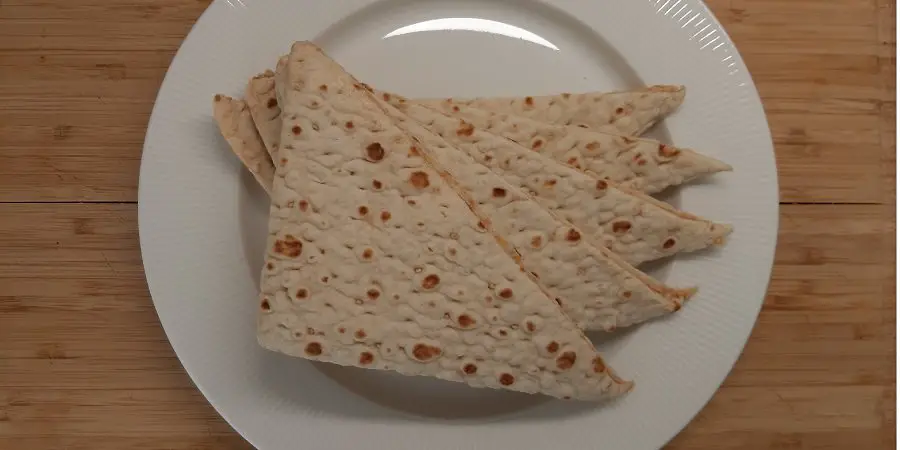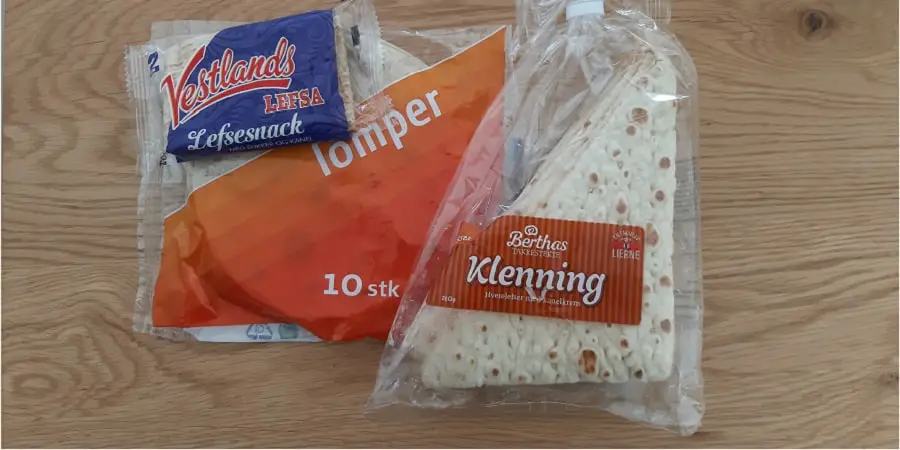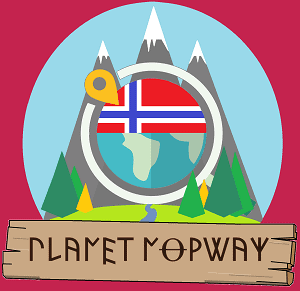From a wrap housing your favorite flavors to a traditional Norwegian sweet pastry. The Norwegian lefse is as versatile as it is tasty.
It has a long tradition and there are many different varieties. One of the most popular ones is the sweet Vestlandslefse or Klenning, which also happens to be my favorite.
Continue reading to learn everything you need to know about this staple of Norwegian cuisine as well as how to make it.

What is lefse?
Lefse is a common term for flat, round, and usually soft pastries. There are many variants and methods for making them and the ingredients are different.
They are baked from different types of flour and are often made with potatoes. Common to all lefser is that they are filled with different raw materials before being folded or rolled.
They can be served as pastries along with coffee, in which case they are typically spread with butter, cinnamon, and sugar, or filled with slices of brown cheese.
They are also frequently filled with salty cold cuts, minced meat, smoked salmon, salad, and more. Some lefser are dried and served as crispy flatbread along with soups and stews.
History of the Norwegian lefse
Norway has long traditions of making lefse. In the beginning, it was made as a type of flatbread. This was largely due to the need to preserve the flour and raw materials from going bad.
The dry flatbread could be stored dry, and sources from the 16th-century state that the flatbread then could be soaked in water to make it soft.
Most of the types we know today emerged from this tradition of flatbread making. One is the potato lefse which became popular as the potato became more common in the 19th century. It was made by adding flour to boiled, mashed potatoes. This was an effective way to use leftover boiled potatoes.
Different types of lefse (and how they are served and eaten)

As mentioned, there are many different varieties of lefse that are served with different types of food. Some types are made with different ingredients, but many are quite similar.
Here are some of the most common types and how they are served and eaten.
Sweet lefse (Vestlandslefse, kling og klenning)
There are many different types of sweet lefse whose recipe is only slightly different. What they are called depends on the region the recipe is from.
The base recipe includes wheat flour, butter, milk, and baking powder/baking soda. The differences are mainly that some are made with eggs, and some replace part of the wheat flour with semolina.
Before serving, is spread with butter and drizzled with sugar before being folded and sliced. It is also common to drizzle them with cinnamon.
In western Norway, lefse usually refers to this sweet lefse type, while it is known as Kling in southeastern Norway and klenning around the Trondheim area.
One of the most popular sweet lefse in Norway is the vestlandslefse. It is mass-produced and sold in stores throughout the country as a sweet snack. It draws inspiration from a variety of flat lefse types from western Norway.
Tykklefse
Tykklefse essentially means thick lefse. These are made with enough baking powder or baking soda to make them rise to between 0.5 to 1 cm when cooking.
While there are some variations, the base recipe consists of wheat flour, milk (preferably sour milk) sugar, butter, and baking powder/soda.
Once complete, the dough is separated into portion sizes which are flattened with a rolling pin before being cooked on a lefse iron, in a frying pan, or in the oven.
Once cooked, the tykklefse is spread with a mix of butter, sugar, and cinnamon before being served folded and sliced.
Potetlefse
The potato lefse is what many associates with THE Norwegian lefse. This variety became popular once the potato became common in Norwegian cuisine in the 19th century. Any leftover potatoes would be boiled and prepared to potato lefse.
As with all types of lefse, there are several recipes with slight variations, but the base recipe is boiled potatoes, salt, and wheat flour. Some recipes also use sour cream and/or cream and butter.
The potatoes are mashed and mixed with the other ingredients into a soft dough. It is then cut into portion sizes and flattened and cooked on a lefse iron or frying pan until golden brown on both sides.
The potato lefse is very versatile and can be filled with salty as well as sweet foods. It is usually served filled and folded and is typically filled with rakfisk (Norwegian cured fish), Christmas food, lutefisk, and salmon.
One of the most common uses of potato lefse in Norway is to use it as a replacement for hot dog bread.
The hot dog is placed inside along and any other garnish, including crispy onion, ketchup, and mustard before being rolled/folded and eaten. When used for this purpose, it is commonly referred to as lompe instead of lefse.
The lefse outside Norway
In many ways, the lefse is to Norwegian cuisine what the tortilla is to the Mexican kitchen, or what the crepe is to the french and European kitchen.
While lefse is mainly made in and consumed in Norway, many Norwegian American communities have kept the tradition alive in North America.
Here it is typically served around Christmas, often alongside the traditional Norwegian dish lutefisk. In some families/communities, it is also served for Thanksgiving.
How Norwegian lefse is made
Both lefser and flatbread were originally fried over an open fire on a stone slab or later an iron plate. Today, special electric irons are used.
Since there are many variants, the methods and ingredients are also different. That being said, most lefser still follow the principle of flatbread baking.
Lefser is baked from different types of flour, with or without potatoes. Some lefser, such as thick lefse, contain a leavening agent, such as baking soda or baking powder. Yeast is not common, with a few exceptions.
After preparing the dough, it is divided into pieces that are folded flat and rolled into thin, round, shapes, varying in size. It is then placed on the lefse iron using a special type of flat stick, known as a spø.
Below you can see a video of the making of Jølstalefse, a type of sweet lefse from Jølster, in Western Norway.

